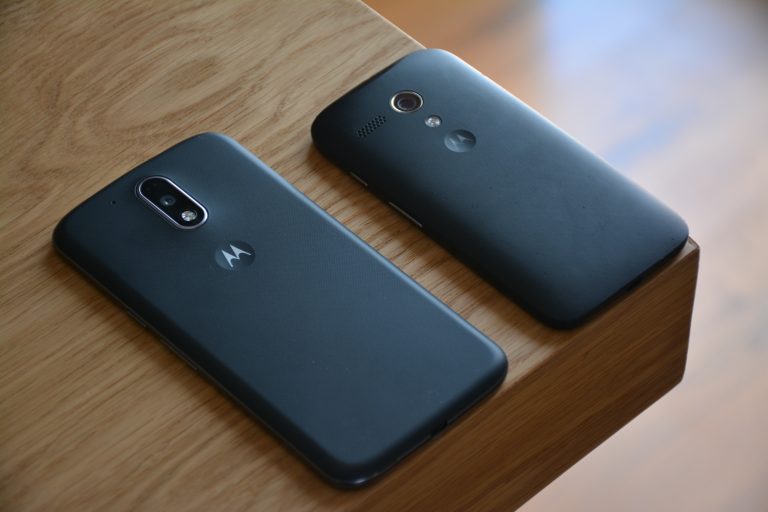2024 is said to be an important year for Motorola after increasingly losing momentum in recent years. The obvious Motorola failure has led the top management to revise its product lineup.
But what are the events that culminated in the Motorola failure? Could they have stopped it? And are there any lessons that other business leaders can learn from it?
For years, Motorola had reigned supreme in the realm of mobile phones, captivating the hearts of consumers with its iconic devices. However, as the winds of change began to blow, signaling the rise of smartphones, Motorola found itself standing at the crossroads of innovation and stagnation.
Let’s dig deeper!
The great start that Motorola had
Back in 1928, two brothers named Paul and Joseph Galvin set up shop in Chicago and started messing around with electronics.They named their venture Galvin Manufacturing Corporation and it became a pioneer in battery eliminators.
In 1930, the company introduced the “Motorola” car radio, revolutionizing automotive and consumer electronics. The name, a blend of “motor” and “ola” (sound), became synonymous with innovation. Suddenly, people could cruise around in their cars while jamming to tunes or catching the news.
Skipping ahead a bit, by the ’70s, Motorola was shaking things up again. Motorola expanded into two-way radios for police, contributing significantly to public safety communications. In 1973, it achieved a historic milestone when Martin Cooper, a Motorola executive, made the first handheld mobile phone call using the DynaTAC. This breakthrough marked the dawn of mobile communication.
Throughout the ensuing decades, Motorola dominated the mobile phone market, epitomized by the iconic Razr.
Motorola became the cool kid on the block with iconic phones like the Razr.
But you know how tech goes – the smartphone era hit, and Motorola kinda stumbled. Changes in ownership, market share loss, and a struggle to keep up left them playing catch-up.
The ownership and partnership that didn’t serve well
Iridium SSC
Motorola was once the leading manufacturer of mobile phones until Nokia surpassed it in 1998. But, at the time, the Motorola company was working on an unusual initiative through its spin-off, Iridium SSC.
Iridium wanted to use space satellites to provide wireless phone service worldwide. However, Iridium declared bankruptcy in 1999 after spending $5 billion. At the time, the company was having difficulty attracting consumers because its handset and talk time would cost significantly more than existing products. Since the bankruptcy, Motorola has been sued for $4 billion in penalties by Iridium creditors who claim that they were breached of contract. This certainly was not good for the company and affected its customer base on a huge level.
Google Acquisition (2012)
In 2012, Google acquired Motorola Mobility, the consumer-oriented division of Motorola, for approximately $12.5 billion. The acquisition was seen as a move by Google to secure Motorola’s extensive portfolio of patents and strengthen its position in the competitive smartphone market. However, Google’s ownership brought challenges as well. Some critics argued that Google’s relationship with other Android manufacturers might become strained due to its ownership of a competing hardware manufacturer.
Lenovo Acquisition (2014)
The story took an unexpected turn when a new hero, Lenovo, entered the scene. With grand promises of revival and a vision for the future, Lenovo acquired Motorola from Google.
In 2014, Google decided to sell Motorola Mobility to Lenovo for $2.91 billion. This marked Lenovo’s entry into the mobile market and gave them control over the Motorola brand. Lenovo aimed to leverage Motorola’s brand recognition and technology to expand its presence globally.
Hope flickered in the hearts of Motorola loyalists, but the enchantment proved difficult to restore.
Ownership changes introduced uncertainty and shifts in strategic focus. Motorola’s transition from Google to Lenovo likely impacted the company’s ability to maintain a consistent and coherent innovation strategy. Changes in leadership, decision-making processes, and corporate culture influenced the company’s ability to adapt to market trends and emerging technologies.
Integration Challenges
Merging with a new parent company involves integration challenges. Differences in corporate cultures, management styles, and strategic priorities can create obstacles. Companies often face difficulties aligning product development, marketing, and overall business strategies after such transitions.
Lack of Innovation
Motorola’s struggle with a lack of innovation played a significant role in its challenges and market share decline. In the fast-paced world of technology, where consumers crave the latest and greatest, Motorola fell behind:
- Slow Response to Smartphone Trends: The company’s delayed entry into the smartphone market meant it missed out on crucial early opportunities to establish a strong presence. By the time Motorola rolled out competitive smartphones, other brands had already captured significant market share.
- Outdated Designs and Features: Motorola’s product lineup at times lacked the wow factor. The absence of cutting-edge features and a failure to anticipate consumer preferences contributed to a lack of excitement around its products.
- Ineffective Differentiation: In a crowded market, successful companies stand out by offering unique features or experiences. Motorola struggled to effectively differentiate its smartphones from the competition. Without a clear and compelling value proposition, consumers were less inclined to choose Motorola over other brands.
- Failure to Capitalize on Brand Legacy: Motorola had a strong legacy, especially with the success of iconic devices like the Razr. Instead of building on the brand’s historical success, Motorola faced challenges in redefining its image and connecting with the evolving preferences of modern consumers.
- Missed Opportunities in Software and Ecosystems: Beyond hardware, successful smartphone manufacturers often invest in software and ecosystems. Motorola struggled to create a seamless and compelling software experience for users, missing opportunities to build a strong ecosystem that could keep customers engaged and loyal.
Motorola didn’t think of the future
Motorola was originally a hardware technology company, but by the mid-2000s, software was driving the mobile phone business. When compared to competitors, Motorola’s phone interface was considered complex, and their cell phones alternated between Linux and Windows-based operating systems. Products such as the Motorola Q, a Blackberry-like smartphone with a QWERTY keyboard, performed severely compared to the competition, whereas the introduction of the Apple iPhone in 2007 changed the game for everyone, transforming the mobile phone into a pocket computer.
The company introduced the Motorola Razr series to concentrate on its main business after failing to complete its side project. Around 120 million Razr v3s were sold globally after its 2004 release, making it the most popular clamshell phone.
However, the shift from traditional mobile phones to smartphones had caught Motorola unprepared. The company struggled to transition its product line to meet the growing demand for smartphones and the delay in adapting to this shift led to a significant loss of market share.
Market Share Loss
Motorola was a dominant player in the mobile phone market in the early 2000s, especially with the success of its Razr phone. However, the company struggled to maintain its market share in the face of intense competition from other smartphone manufacturers, particularly Apple and Samsung.
While Apple and Samsung were rolling out these sleek, touchy-feely devices with all sorts of apps, Motorola was stuck in the flip-phone era. People wanted the whole touchscreen, app-filled experience, and Moto was slow to get on board.
Their phones just didn’t have that oomph compared to the competition. Cameras were okay, designs weren’t turning heads, and it felt like they were playing catch-up in a race that was moving at warp speed.
When Motorola was divided into pieces
Motorola took various steps to keep itself going. But nothing seemed to have worked out. Soon after introducing the Motorola Razr series in 2005, Motorola and Apple teamed up to release the Rokr E1, which was compatible with Apple’s music shop. However, Apple ended the collaboration when it introduced the iPhone in 2007.
Motorola refocused on producing Android phones under CEO Sanjay Jha in 2009, introducing its Droid phone line, which was picked up by US telco Verizon. In the United States, Droid sales surpassed those of the iPhone, prompting Google to consider purchasing Motorola. As a result, the company was divided in two in 2011: Motorola Mobility, which concentrated on consumer devices such as mobile handsets, was sold to Google in May 2012 for $12.5 billion, leaving the residue as Motorola Solutions.
Motorola has fallen into the struggling business category as a consequence of its inability to grow, a lack of urgency, and its failure to innovate, and keep up with the latest developments.
The lay-off laid Motorola off the charts
Every aspect of Motorola’s P-O-L-C (planning, organizing, leading, and controlling) management was a failure. When the company initially started, CEO Bob Galvin had a clear goal and inspired the team, but after he left, the business lost its direction. Their most significant mistake was failing to realize that the 3G market was expanding and making their 2G phones obsolete. Motorola failed to effectively organize its human resources as a result of its massive layoffs, sixty failing enterprises, and worldwide scattering.
The management at Motorola failed to communicate a clear vision and objective, which was another problem that contributed to the company’s failure. Motorola’s office was constantly shifting or going through cultural changes, and nobody was explaining what was happening or why. As a result, there was poor employee morale, which led to performance suffering, lowering the company’s revenue. When Google bought Motorola, the employees believed they were no longer the experts on their products.
Ted Fishman, a journalist, explained in his extensive autopsy of Motorola,
“Top management believed in letting the sector heads run the businesses their way. If that rubbed others the wrong way, tough luck. There was no cohesive plan for network technology and handset technology. The two operated totally independently, in totally different directions.”
Behind Motorola’s failure: In a Nutshell
Mostly, the inability to adapt quickly and evolve led to the mobile phone company’s failure in the highly competitive smartphone industry.
Its market share fell from 21% to 6% between 2006 and 2009.
What led to the failure of Motorola could have been avoided if the company’s management had been open to innovation, established a culture of innovation, and encouraged employees to innovate. We have put together over 60 real-life examples in our free e-book where leveraging the power of employee innovation, companies benefitted a lot.
To avoid the same fortune as the Motorola’s failure or Xerox’s failure, then implement our idea management tool in your system. Such downfall stories can be used to learn the importance of innovation in every business.



